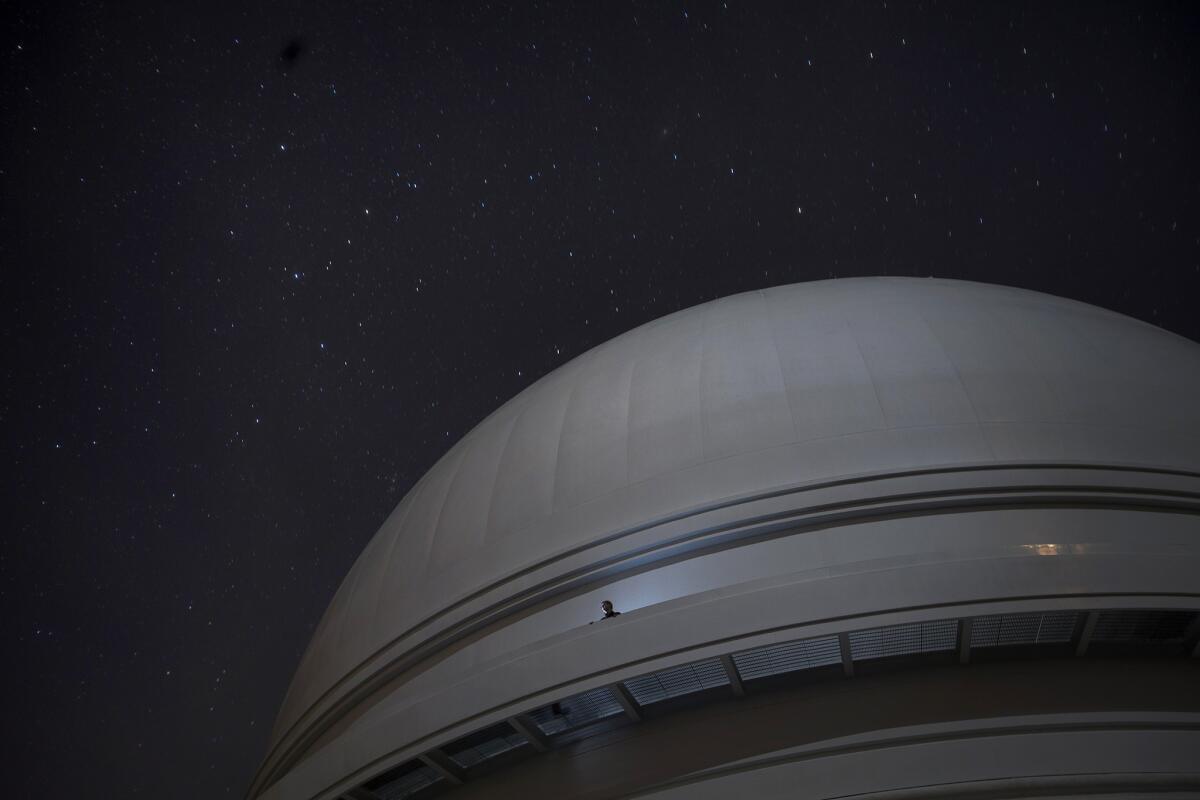The man who killed Pluto searches the heavens for new worlds to conquer
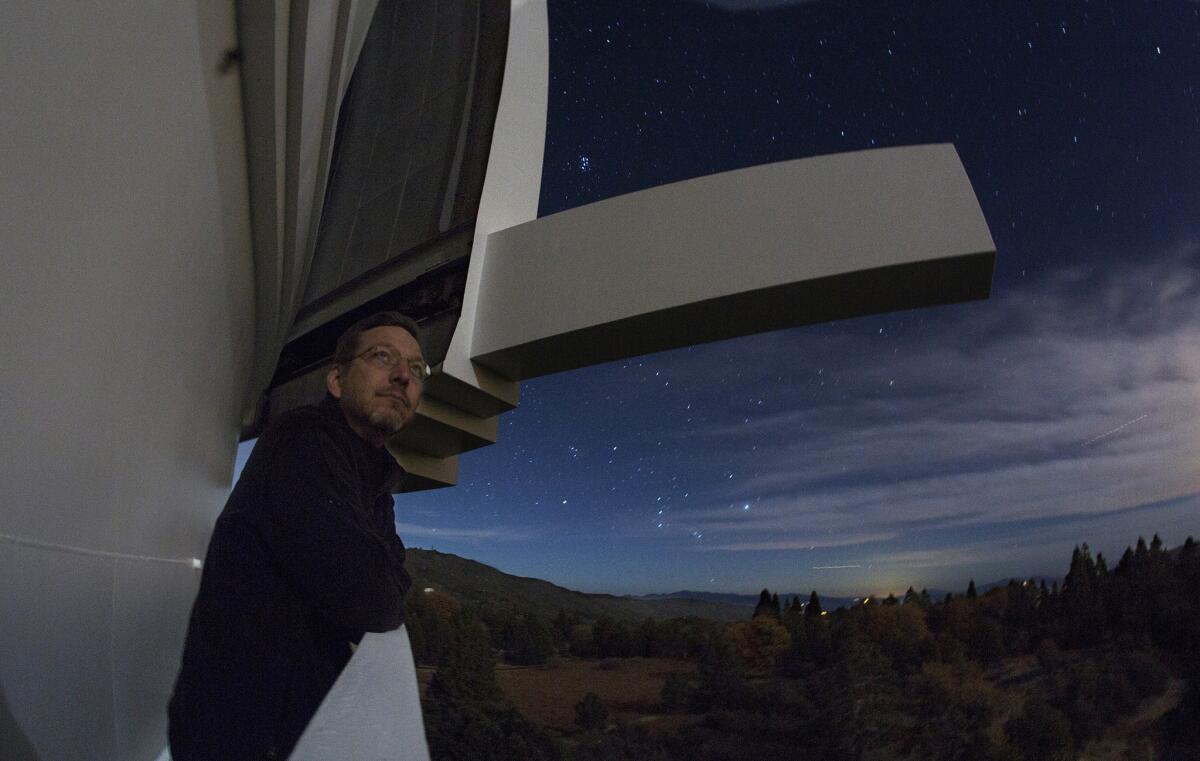
Astronomer Mike Brown is now studying other pieces of the planetary puzzle. ‘We need to find out how we got here,’ he says.
The shutters to the dome sheltering the 200-inch telescope on Palomar Mountain open with a clunk. With a steady purr of the two-horsepower motors, the twin panels, 115 tons each, begin to part.
A twilight sky slowly breaks over the curved edge. Girders and beams, the optical tube and horseshoe mount emerge like a fantastic engraving from the past imagining the future.
But Mike Brown — Pluto slayer, dwarf-planet hunter — has little time for wonder. He booked his time on the telescope seven months ago and has a schedule to keep. Tonight and tomorrow he hopes to photograph about 30 objects in space between Jupiter and Neptune, and he's worried.
Sitting in the observing room with three computer monitors glowing before him, he focuses on a radar image of Southern California, where a cloud the size of Ohio is moving on shore. Getting time on the telescope is difficult, and the loss of one night could set him back a year.
Since killing Pluto in 2006 — his intentionally dramatic expression for the role he played demoting the onetime ninth planet — Brown is eager to put his celebrity behind him. The mock funerals and hand-wringing, the obscene phone calls and earnest debate, he feels, waylaid the real agenda: to understand how the solar system developed.
"Killing Pluto was awesome," he says, "but we need to find out how we got here."
With that knowledge, Brown hopes that one day other pieces in the puzzle might fall into place, like how the Earth and its neighboring planets formed and how clouds of gas evolve into planetary systems.
Killing Pluto was awesome, but we need to find out how we got here.”— Mike Brown, Caltech
Leaving his desk, he takes the stairs to the gallery that overlooks the telescope. He opens a door to the outside catwalk. The meadows, oaks and conifers of the Palomar campus roll away to vistas of distant peaks: San Jacinto, Gorgonio and Baldy to the north.
For centuries, astronomers believed that planets formed and existed in stable environments, moving through space like the methodical gears of a clock. Today, Brown and his colleagues see their genesis as something more messy, disorderly and catastrophic. It's just a matter of learning how to read the clues.
"We're in the midst of a renaissance in planetary science," he says, "and we're lucky that the universe is amenable to our queries."
He pauses, and frowns at the horsetail clouds that have begun to streak the sky. "Just not tonight."

More than an astronomer, Brown considers himself an explorer. As a boy in Huntsville, Ala., listening to the earthquake-like roar of Saturn V rockets being tested for the Apollo program, he dreamed of becoming an astronaut, but settled for a different style of discovery.
He recounts being a student at UC Berkeley and once looking through the telescope at Lick Observatory when it was focused on the middle star of Orion's belt, one of the universe's most spectacular nebulae.
"It was as if I was flying over it with a joy stick," he says.
Now 48 and a professor of planetary astronomy at Caltech, he is on the trail of a mystery that took place 8 billion years after the Big Bang, long after the clouds of gas and dust had spun into stars and galaxies.
To help him, he's enlisting the help of some old friends. He knows them by what he refers to as their license plates: 2007 OR10, for instance, or 2003 OP32, more affectionately known as Snow White and Opie. They are among the 1,300 identified pieces of rock and ice circling the sun in ungainly orbits that take hundreds of years to complete.
They occupy a region of the solar system known as the Kuiper Belt and were mostly discovered in the boom years of observation, the aughts, when digital photography opened up the sky to analyses more detailed than what plates and film allowed. Brown has about 100 of these dwarf planets to his name, perhaps more than any single observer.
Caught in the deep freeze of space, these pieces of primal debris still hold a record of their creation, and Brown is hoping that they will help him understand what occurred in the solar system 3.9 billion years ago, when thousands of these objects careened through space, shooting stars on an epic scale, pelting the sun and planets throughout the solar system.
In textbooks, the assault is known as the Late Heavy Bombardment. Its evidence can be found on the pockmarked surface of the moon and has been dated through the testing of lunar rocks, melted by the impacts and collected during the Apollo missions.
The bombardment, Brown explains, destroyed whatever life was on Earth at the time and helped distribute water — in the form of ice — here and throughout the solar system.
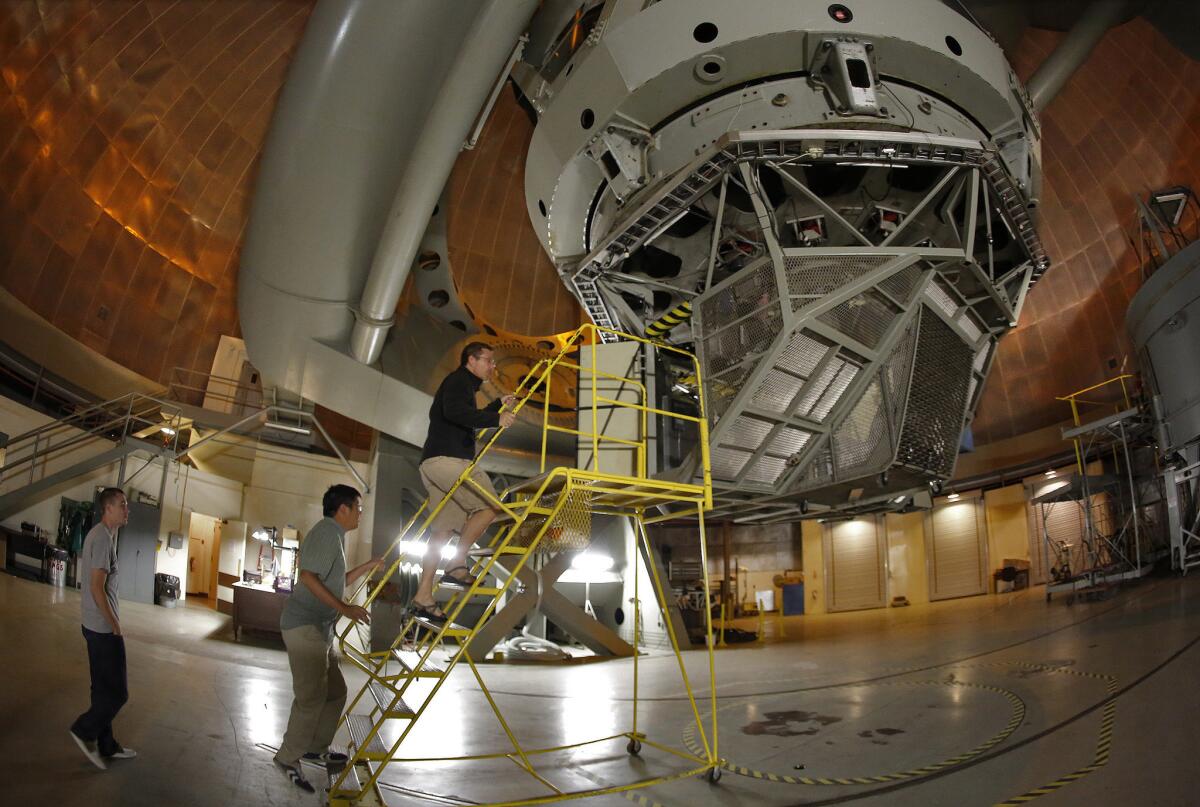
Caltech astronomer Mike Brown leads students Patrick Fischer, left, and Ian Wong, center on a tour of the Hale telescope. More photos
Although astrophysicists have proposed a number of explanations for the Late Heavy Bombardment, no one has been able to prove the theories.
In 2005, researchers in France proposed a theory known as the Nice model, named for the city where they worked. They argued that in the solar system's early days, the orbits of the outer planets were closer to the sun, but that the arrangement was unstable.
Jupiter was too large, and with each pass, its gravitation pull distorted the orbit of its neighbor Saturn. Saturn slowly began to swing into the orbits of Uranus and Neptune, which over 1,000 years plowed through the Kuiper Belt, flinging almost all of its debris through space.
Theories, however, are only as good as their evidence.

Twenty-four hours later, the sky is clear. Driving a green Subaru with a burned-out headlight and expired plates, Brown pulls into the parking lot next to the dome.
Almost the same dimensions as the Pantheon in Rome, the building is hallowed ground for the professor, who has enlisted the help of two graduate students, Ian Wong and Patrick Fischer. Brown wants to introduce them to this engineering miracle. Once the largest telescope in the world, it opened in 1949, drawing on technology that helped bridge the Golden Gate and won the war at sea.
Although the telescope can be operated from a control room on the Caltech campus, Brown values his time on the mountain, so rich in the history and the lost etiquette of hands-on observing.
He and his students sleep in the monastery, a short drive from the telescope. The rules, posted in each room, are simple: take showers after 1 p.m.; let the dark shades up quietly; walk softly; avoid conversation; close doors quietly. At 5 p.m., they share their supper in the dining room.
"I don't want these telescopes to be disembodied or abstract," he says. "This is not a video game. When the shutter opens, you should suck in your breath. You should feel the wind, check the sky, smell the smells."
A low drone vibrates through the observing room as the massive telescope tracks to one of Brown's coordinates. Outside, the shadowy machinery slips through space like the stars it follows.
After a series of calibrations and then an exposure, a monitor shows a scattering of bright dots of varying intensity and size, mostly stars and a few galaxies, against a grainy background.
Toggling between two pictures of the same regions of space, Brown and the students look for any speck of light that has moved, evidence that they captured one of the Kuiper Belt objects. The image is the first step toward an analysis of its spectrum and composition.
With data in hand, they will head back to Caltech and look for concentrations of methanol, which will tell them where the object resided before Neptune's assault on the Kuiper Belt so long ago.
Brown is not making any claims for his research; he will start analyzing the data later in the year. But if planets like Saturn, Uranus and Neptune shifted their orbits and scattered the Kuiper Belt, then the theory confirms how random and "amazingly precarious" Earth actually is.
"We once thought that our solar system was a model for all other planetary systems," he says, "but we're realizing now — especially after discovering other systems that didn't look anything like ours — how accidental we actually are."

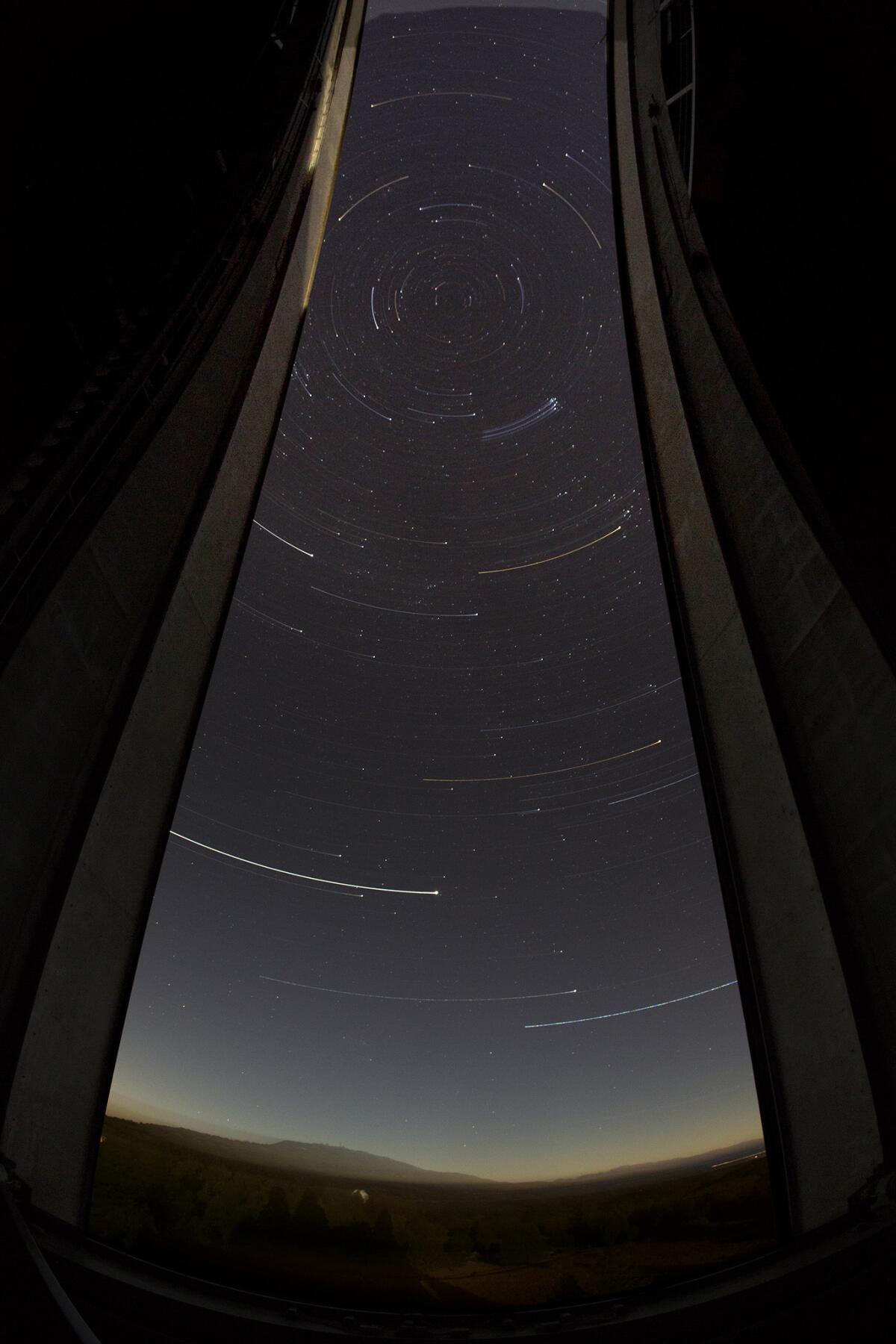
Stars in the southern sky appear as streaks during a 50-second exposure while the Palomar Observatory dome rotates. More photos
The night falls into an easy rhythm.
Brown and his students double-check the coordinates of the objects they are studying. They pass the numbers on to a technician who directs the telescope to that patch of sky, and with a click of a mouse, they make their exposures, averaging about three an hour.
By 9:30 p.m., Brown sighs; it's the worst hour. Only three hours in, and it feels like forever. He sits back, eager to let Wong and Fischer do the calculating and drive the telescope. He wishes he had his Johnny Cash CDs.
At midnight, he breaks into his lunch, a peanut butter and jelly sandwich. Wong has rolled three chairs together and is sprawled over them. Fischer is working at the computer.
At 3 a.m., Brown dozes with his feet on the desk and his computer on sleep mode in his lap.
An hour and a half later, he's shivering in the cold from the catwalk looking at the Zodiacal Light, a brightening in the sky before sunrise that comes from the dust of ancient collisions in the asteroid belt.
With the night ending, stars fading in the light, Brown scrambles to try to set the telescope on Comet ISON, the 4.5-billion-year-old relic as it heads near the sun, soon to be destroyed in its encounter.
Evidence of the solar system's chaotic beginnings surround him.
An hour later, the shutter to the telescope closes, and Brown and the students head back to the dormitory for a few hours of sleep. The rising sun sets the distant peaks afire.
FOR THE RECORD:
Caltech astronomer: In the March 21 Section A, an article about Caltech astronomer Mike Brown said that Brown, as a student, looked through the telescope at Lick Observatory when it was focused on the middle star of Orion's belt and saw one of the universe's most spectacular nebulae. The Orion Nebula is located near the middle of Orion's sword. —
Follow Thomas Curwen(@tcurwen) on Twitter
Follow @latgreatreads on Twitter
More great reads
B-2 rescue: Secret mission saves rare craft
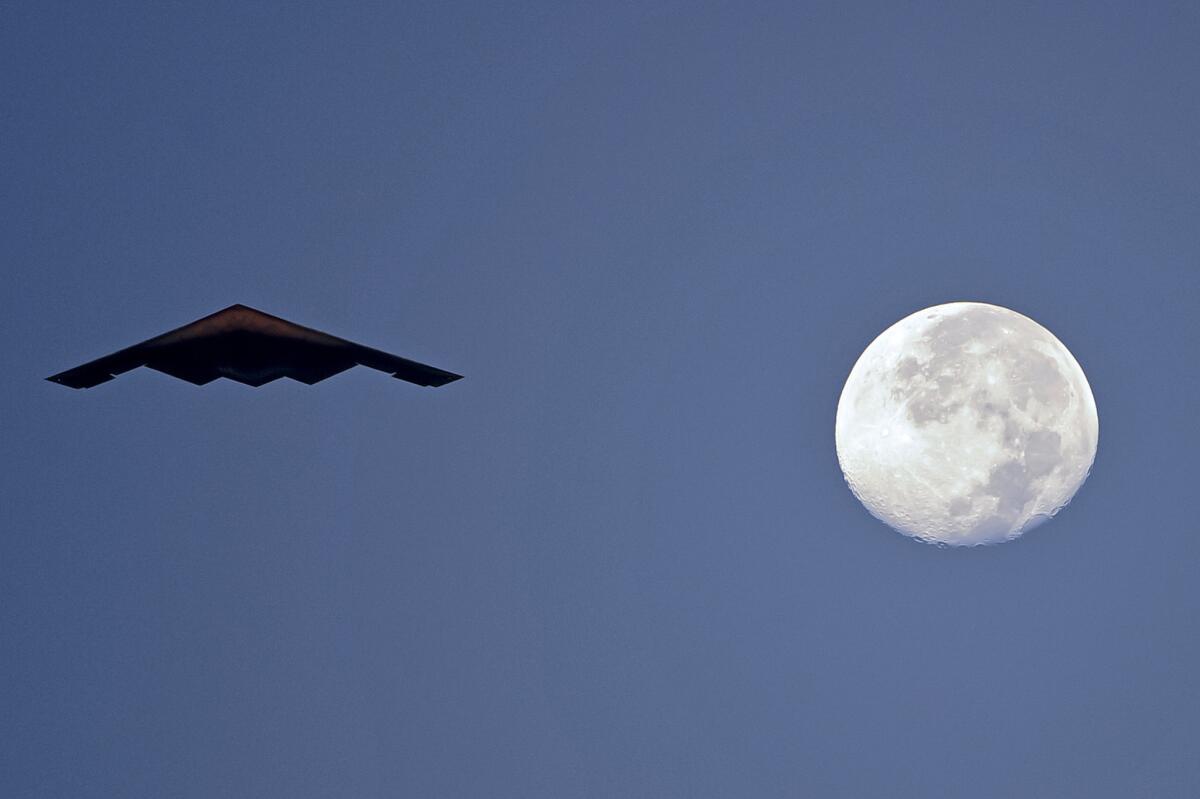
Sign up for Essential California
The most important California stories and recommendations in your inbox every morning.
You may occasionally receive promotional content from the Los Angeles Times.
